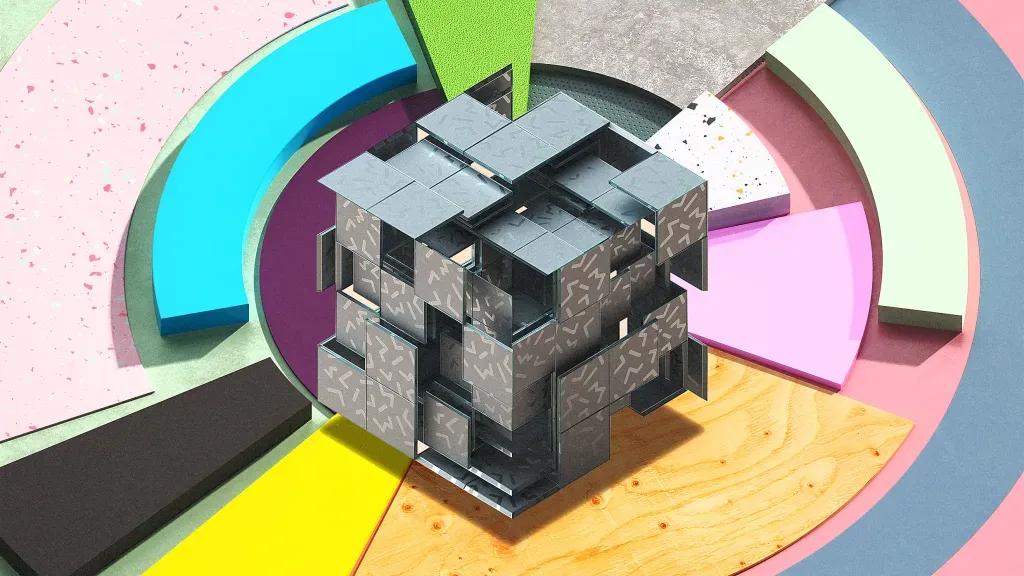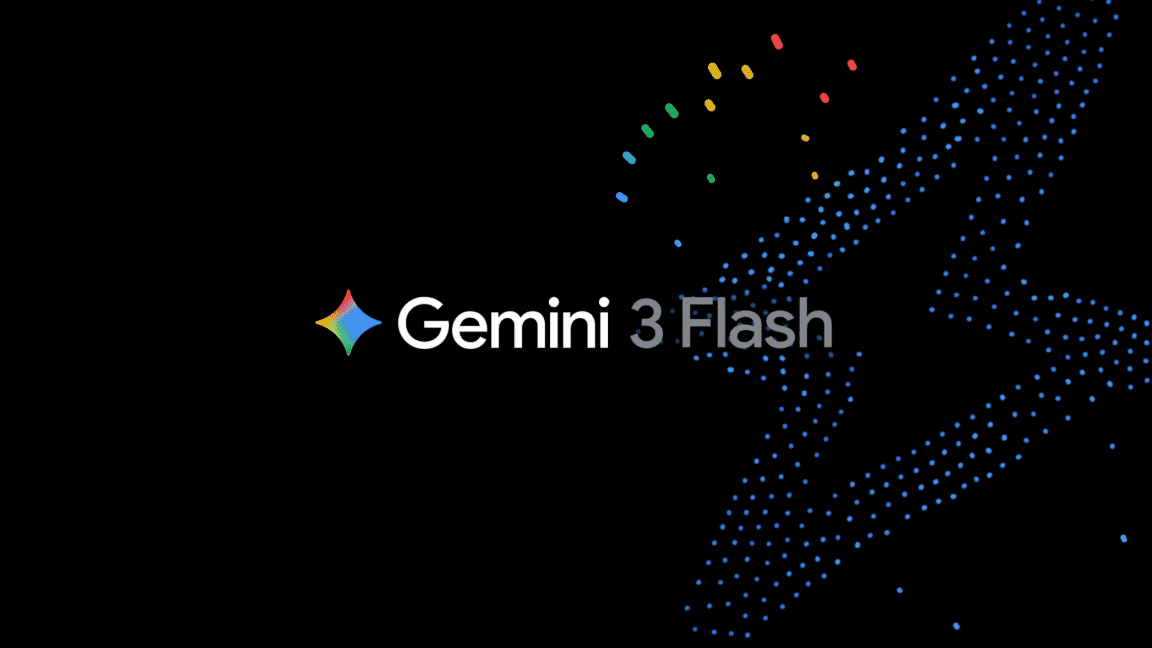Autodesk Unveils New AI Capabilities Across Its Software Portfolio
5 Sources
5 Sources
[1]
Autodesk is making life easier for artists with new AI capabilities
Exciting features like drawing automation and is set to accelerate workflows by automating tedious tasks. Autodesk has officially announced an exciting new roster of AI capabilities coming to its 3D modelling software portfolio, including Maya, Flame, Flow, Fusion, and Wonder Studio. I'm here at the company's annual Autodesk University (AU) conference in San Diego, California, and learning first-hand how these AI tools are moving the industry forward, while accelerating artist workflows. As with most AI announcements, there's quite a bit to unpack here. Autodesk's president and CEO, Andrew Anagnost, assures us that AI is not here to replace anyone and believes the key purpose of these new AI tools is to enhance artist creativity and improve storytelling efficiency by automating more tedious tasks. For example, there's a new ML Deformer algorithm in Maya that can learn how complex characters move, simply from the existing data in a scene. This will allow animators to pose characters much faster and in real-time. Autodesk is launching in total around 25 new AI models that work by analysing shots and that are trained on motion capture data. Additionally, Autodesk has been continuing to develop Flow, its industry cloud for media and entertainment that was first announced back in 2022. A new feature referred to as Flow Animating in Context for Maya will provide access to editorial sequencing data, so that animators can see the editorial timeline as they work, and create better animations faster that fulfill a directors intent. The company is also launching a new Flow Graph Engine API that will enable new cloud features in content creation software tools like Maya and 3DS Max, while allowing developers to run Bifrost graphs in the cloud. This helps to realise creative ideas that were previously hard to achieve. Meanwhile, artists can now also quickly denoise images in Arnold when rendering a scene, can achieve more realistic results when working with videos in Flame by using AI to create extra frames in between shots, and artists can now use the Wonder Studio by Wonder Dynamics (recently acquired by Autodesk) to easily put characters into live-action scenes. I'll be honest, as someone very new to the 3D industry, a lot of these buzzwords and AI announcements at AU so far have gone straight over my head. But after getting to network and talk with industry experts and artists from around the world, it's becoming clear just how game-changing these integrations from Autodesk will be across the fields of media, entertainment, manufacturing, and even the automotive industry too. Within the design and manufacturing industry, AutoConstrain is a new feature coming to Fusion that will use AI to initially analyse project sketches, and then can suggest dimensional constraints going forward to maintain the design intent throughout the project, adapting as you work, and offering new options when dimensions are changed or deleted. This is a great time saver for designers, and can prevent delays from constraint errors that might have been previously overlooked. Then there's the AI-powered tool, Drawing Automation, which will also be coming to Fusion. It can create 2D drawings from 3D models,while laying out drawing sheets, applying styles, and can identify and removing fasteners that aren't needed. Lastly, there's going to be a new Autodesk Assistant in Fusion, equipped with Autodesk-specific and wider industry knowledge whereby users can prompt the assistant with a specific question for help with a project. I haven't even mentioned Bernini yet, which is Autodesk's research project for generative AI 3D shape creation, and it's seriously impressive! I'll update you more in the coming days with what I learn at AU, so stay tuned for updates including first impressions and hands-on sessions.
[2]
New Autodesk AI Capabilities Streamlining The Manufacturing Industry
Australia & New Zealand - October 16, 2024 - Autodesk has unveiled new ways it is bringing Autodesk AI-powered capabilities to Autodesk Fusion and Alias, designed to increase productivity as the manufacturing industry delivers increasingly complex products. The new capabilities were announced at the annual Design & Make conference, Autodesk University. The new capabilities include: "For decades, manufacturers have responded to their customers' demands for increasingly complex products, which in turn typically increases complexity of designing and manufacturing those products," said Jeff Kinder, EVP for Product Development and Manufacturing Solutions at Autodesk. "And while complexity can seem daunting, we also have sophisticated new tools and information at our fingertips that empower us to thrive in this environment. Proliferation of data is the fuel that supercharges these tools. But extracting data's value is no small feat. "AI can help cut through the complexity. Imagine an AI assistant that flags supply chain risks. Simulations that push designers toward more sustainable and manufacturable designs. Automations that handle error-prone, burdensome tasks, freeing people to focus on high-value, more rewarding work. We're building these capabilities, as well as empowering our customers to build them. "As an industry, we have an unprecedented opportunity to seize the value that AI, data, and digitisation offer. To do so, we must start by accessing and interconnecting the data to uncover the insights it offers. That's why we're so invested in continuing to build the Autodesk Fusion industry cloud. It's the design and make platform for manufacturing. It's a central environment for data, closely coupled with Autodesk AI to augment creativity, automate your workflow's tedious tasks, and analyse project data to yield predictive insights that benefit business," said Kinder. Autodesk AI powers features in Autodesk Fusion and Autodesk Alias that save significant amounts of time, while augmenting the creative process of product designers and engineers manufacturing today's increasingly complex products. The new Manufacturing Data Model API Autodesk has also announced the release of a new Manufacturing Data Model API that enables customers and partners to more easily exchange data with the cloud-hosted, granular data models that are the lifeblood of every Fusion project. With the new API, authorised third-party apps can now feed their data into Fusion models, better integrating Fusion with existing workflows, connecting it to cloud and desktop tools used across the industry. Tools like OpenBOM, which created a web-based process that automates bill of materials (BOM) workflows, giving non-designers crucial views into a project's BOM from the design data, removing a manual, mistake-prone process. And Cideon, which created a two-way connection between Fusion and SAP, enabling CAD engineers and manufacturers to see SAP's enterprise resource planning (ERP) information in Fusion. This provides greater clarity about the components specified in a design, giving everyone up-to-date BOMs and common ground for follow-up ERP processes, such as calculating costs and ordering parts. An ecosystem of connected tools for faster collaboration Recognising that as its customers design and make, they rely on a broad ecosystem of tools that they expect to work together seamlessly. Autodesk partners with more than 150 hardware and software providers, more than 20 of which have been added this year, to increase productivity, sustainability and speed to market with innovative products: Designers working in Autodesk Inventor can view a heatmap of the sustainability impacts of the materials they've chosen, and consider alternatives, using the Makersite add-on for Inventor.
[3]
Autodesk : AI strengthens Fusion and Alias, increasing design and make productivity, efficiency, and inspiration
Autodesk AI powers features in Autodesk Fusion and Autodesk Alias that save significant amounts of time, while augmenting the creative process of product designers and engineers manufacturing today's increasingly complex products. For decades, manufacturers have responded to their customers' demands for increasingly complex products, which in turn typically increases complexity of designing and manufacturing those products. And while complexity can seem daunting, we also have sophisticated new tools and information at our fingertips that empower us to thrive in this environment. Proliferation of data is the fuel that supercharges these tools. It's the industry's most valuable resource because it can do so much, when harnessed. But extracting data's value is no small feat. AI can help cut through the complexity. Imagine an AI assistant that flags supply chain risks. Simulations that push designers toward more sustainable and manufacturable designs. Automations that handle error-prone, burdensome tasks, freeing people to focus on high-value, more rewarding work. We're building these capabilities, as well as empowering our customers to build them. As an industry, we have an unprecedented opportunity to seize the value that AI, data, and digitization offer. To do so, we must start by accessing and interconnecting the data to uncover the insights it offers. 68% of data available for automation and insights goes unused because it's disconnected, found Seagate Technology's Rethink Data survey of global enterprise leaders. It's sequestered in different tools, files, or silos, unable to inform the whole workstream and manufacturing ecosystem. That's why we're so invested in continuing to build the Autodesk Fusion industry cloud. It's the design and make platform for manufacturing. It's a central environment for data, closely coupled with Autodesk AI to augment your creativity, automate your workflow's tedious tasks, and analyze project data to yield predictive insights that benefit your business. At this year's Autodesk University (AU), I'm excited to share some of the ways we're bringing new Autodesk AI-powered capabilities to Fusion, as well as Alias, that increase productivity as you design and make today's complex products:
[4]
New Autodesk AI Capabilities Accelerating AEC Digital Transformation
Advancements in data, industry cloud and investments in core portfolio lead the transformation towards outcome-based BIM Australia & New Zealand - October 16, 2024 - Announced at the annual Design & Make conference, Autodesk University, Autodesk is introducing new artificial intelligence (AI) capabilities and data connections to accelerate the digital transformation of the architecture, engineering, construction, and operations (AECO) industry, and support organisations' ability to deliver smarter, more resilient ways of designing and making homes, workplaces, and communities. "We understand the challenges to achieve this future: the $3.7 trillion needed to meet infrastructure needs, the staggering amount of waste generated yearly from construction and demolition, the increasing project complexities, and tightening budgets," said Amy Bunszel, EVP of architecture, engineering, and construction (AEC) solutions at Autodesk. "We believe that outcome-based building information modeling (BIM) is the solution to achieving outcomes like carbon neutrality or reduced waste throughout the project lifecycle. The foundation of outcome-based BIM is data -- data that's granular, accessible, and open, uniting teams across the project lifecycle. Better data helps to meet accelerated timelines, provides AI-powered insights to improve productivity, and enables more informed decision-making, lowering risks down the line." Autodesk is building Autodesk Forma, the AECO industry cloud, to connect project data-within Autodesk and third-party solutions alike - to unify BIM workflows across the teams that design, build, and operate the built environment. The key to unlocking the value of this data is Autodesk Docs, a common data environment for the AECO industry. Autodesk Docs is the central hub that will connect, organise, and secure data across solutions like AutoCAD, Autodesk Construction Cloud, Revit, Tandem, Civil 3D, and Autodesk Workshop XR so that the right data can reach the right people, at the right time, throughout the project lifecycle. Earlier this year, Autodesk released the AEC Data Model API - an important step towards enabling granular data for Autodesk Docs users. Now, Autodesk Forma has been connected to Autodesk Docs, Autodesk's AECO data repository, and over time, this will bring with it new workflows and opportunities that connect teams, and project data, together to supercharge collaboration. Over time, Autodesk Forma's connection to Autodesk Docs will enhance the integration between Forma and Revit, laying the groundwork for a powerful, fluid connection between Forma's planning tools and Revit's detailed design and documentation capabilities. Autodesk has also announced commercial availability of Autodesk Workshop XR, an immersive design review workspace connected to Autodesk Docs. Workshop XR allows design teams and stakeholders to walk through their 3D models at human scale for the ultimate design review experience. The extended reality environment provides a deeper understanding of the spatial experience within the built environment, helping teams create and catch design issues, preventing costly rework, delays, and project waste. Getting data right is foundational to advancing outcome-based BIM and improving customer workflows with AI. At AU, we'll discuss exciting advancements from Autodesk AI that improve productivity, creativity, and sustainability. Advancement to Autodesk AI to improve productivity, creativity and sustainability include Embodied Carbon Analysis in Autodesk Forma, now in beta. The earlier in the design process you can measure the carbon footprint of building materials, the greater impact you can have on outcomes. This AI-powered capability will allow designers to test material design decisions from day one. It's part of Autodesk's Total Carbon Analysis for Architects in theAEC Collection, which measures carbon impacts from things like lighting, HVAC, architectural elements, and building materials. Autodesk AI is also making it easier to surface information from mountains of data. With the beta release of Autodesk Assistant in Autodesk Construction Cloud, users can easily ask questions around their specification documents. Using natural language prompts, Autodesk Assistant can answer specific questions, generate lists of items, or even draft summaries for project communications. Over time, Autodesk Assistant will become more engrained in everyday workflows to help teams save time and reduce risk. Additionally, the use of real-world data and context is especially valuable for designing and making better outcomes for the built environment. Autodesk continues to invest in its strategic alliance with Esri, and announced plans to expand Esri's data availability within Autodesk Forma, giving architects access to valuable contextual data earlier in the design process. In addition to existing access to Esri's terrain data, there are plans to incorporate contextual geographic data from ArcGIS, including both Esri and consensually shared customer data for buildings, zoning, roads, property boundaries, imagery and more. This expanded integration will help architects and planners use Autodesk Forma to design with location in mind and deliver projects that are more sustainable, resilient, and can better support local communities. Also unveiled at Autodesk University, updates to Autodesk's core portfolio of products that are connected to Autodesk Docs - Revit, AutoCAD, Civil 3D and Autodesk Construction Cloud - include: "The core portfolio is the on-ramp to outcome-based BIM. We're committed to partnering with our customers on this transformation by helping them succeed today while we build towards the future and advance Autodesk Forma as the AECO industry cloud," said Bunszel.
[5]
Autodesk Accelerates Future BIM With New AI, Data Connections
Advancements in data, industry cloud and investments in core portfolio lead the transformation towards outcome-based BIM Australia & New Zealand - October 16, 2024 - Announced at the annual Design & Make conference, Autodesk University, Autodesk is introducing new artificial intelligence (AI) capabilities and data connections to accelerate the digital transformation of the architecture, engineering, construction, and operations (AECO) industry, and support organisations' ability to deliver smarter, more resilient ways of designing and making homes, workplaces, and communities. "We understand the challenges to achieve this future: the $3.7 trillion needed to meet infrastructure needs, the staggering amount of waste generated yearly from construction and demolition, the increasing project complexities, and tightening budgets," said Amy Bunszel, EVP of architecture, engineering, and construction (AEC) solutions at Autodesk. "We believe that outcome-based building information modeling (BIM) is the solution to achieving outcomes like carbon neutrality or reduced waste throughout the project lifecycle. The foundation of outcome-based BIM is data -- data that's granular, accessible, and open, uniting teams across the project lifecycle. Better data helps to meet accelerated timelines, provides AI-powered insights to improve productivity, and enables more informed decision-making, lowering risks down the line." Data-powered collaboration across the project lifecycle Autodesk is building Autodesk Forma, the AECO industry cloud, to connect project data-within Autodesk and third-party solutions alike - to unify BIM workflows across the teams that design, build, and operate the built environment. The key to unlocking the value of this data is Autodesk Docs, a common data environment for the AECO industry. Autodesk Docs is the central hub that will connect, organise, and secure data across solutions like AutoCAD, Autodesk Construction Cloud, Revit, Tandem, Civil 3D, and Autodesk Workshop XR so that the right data can reach the right people, at the right time, throughout the project lifecycle. Earlier this year, Autodesk released the AEC Data Model API - an important step towards enabling granular data for Autodesk Docs users. Now, Autodesk Forma has been connected to Autodesk Docs, Autodesk's AECO data repository, and over time, this will bring with it new workflows and opportunities that connect teams, and project data, together to supercharge collaboration. Over time, Autodesk Forma's connection to Autodesk Docs will enhance the integration between Forma and Revit, laying the groundwork for a powerful, fluid connection between Forma's planning tools and Revit's detailed design and documentation capabilities. Autodesk has also announced commercial availability of Autodesk Workshop XR, an immersive design review workspace connected to Autodesk Docs. Workshop XR allows design teams and stakeholders to walk through their 3D models at human scale for the ultimate design review experience. The extended reality environment provides a deeper understanding of the spatial experience within the built environment, helping teams create and catch design issues, preventing costly rework, delays, and project waste. Accelerating better outcomes with data and AI Getting data right is foundational to advancing outcome-based BIM and improving customer workflows with AI. At AU, we'll discuss exciting advancements from Autodesk AI that improve productivity, creativity, and sustainability. Advancement to Autodesk AI to improve productivity, creativity and sustainability include Embodied Carbon Analysis in Autodesk Forma, now in beta. The earlier in the design process you can measure the carbon footprint of building materials, the greater impact you can have on outcomes. This AI-powered capability will allow designers to test material design decisions from day one. It's part of Autodesk's Total Carbon Analysis for Architects in theAEC Collection, which measures carbon impacts from things like lighting, HVAC, architectural elements, and building materials. Autodesk AI is also making it easier to surface information from mountains of data. With the beta release of Autodesk Assistant in Autodesk Construction Cloud, users can easily ask questions around their specification documents. Using natural language prompts, Autodesk Assistant can answer specific questions, generate lists of items, or even draft summaries for project communications. Over time, Autodesk Assistant will become more engrained in everyday workflows to help teams save time and reduce risk. Additionally, the use of real-world data and context is especially valuable for designing and making better outcomes for the built environment. Autodesk continues to invest in its strategic alliance with Esri, and announced plans to expand Esri's data availability within Autodesk Forma, giving architects access to valuable contextual data earlier in the design process. In addition to existing access to Esri's terrain data, there are plans to incorporate contextual geographic data from ArcGIS, including both Esri and consensually shared customer data for buildings, zoning, roads, property boundaries, imagery and more. This expanded integration will help architects and planners use Autodesk Forma to design with location in mind and deliver projects that are more sustainable, resilient, and can better support local communities. Building the future by investing in the core Also unveiled at Autodesk University, updates to Autodesk's core portfolio of products that are connected to Autodesk Docs - Revit, AutoCAD, Civil 3D and Autodesk Construction Cloud - include: "The core portfolio is the on-ramp to outcome-based BIM. We're committed to partnering with our customers on this transformation by helping them succeed today while we build towards the future and advance Autodesk Forma as the AECO industry cloud," said Bunszel.
Share
Share
Copy Link
Autodesk announces a range of AI-powered features for its design and engineering software, aiming to enhance productivity and creativity across multiple industries.

Autodesk Introduces AI-Powered Features Across Software Suite
Autodesk, a leader in design and engineering software, has unveiled a suite of new artificial intelligence (AI) capabilities across its product portfolio. The announcement, made at the annual Autodesk University conference, showcases the company's commitment to leveraging AI to enhance productivity, creativity, and sustainability in various industries
1
2
.AI Enhancements in 3D Modeling and Animation
In the realm of 3D modeling and animation, Autodesk is introducing several AI-powered features:
-
ML Deformer in Maya: This new algorithm learns complex character movements from existing scene data, enabling animators to pose characters faster and in real-time
1
. -
Flow Animating in Context: This feature for Maya provides access to editorial sequencing data, allowing animators to see the editorial timeline as they work, resulting in faster and more accurate animations
1
. -
AI-powered denoising in Arnold: Artists can now quickly denoise images when rendering a scene, improving efficiency in the rendering process
1
.
AI in Manufacturing and Product Design
Autodesk is also bringing AI capabilities to its manufacturing and product design tools:
-
AutoConstrain in Fusion: This feature analyzes project sketches and suggests dimensional constraints, maintaining design intent throughout the project and adapting as work progresses
1
2
. -
Drawing Automation in Fusion: An AI-powered tool that creates 2D drawings from 3D models, automating the layout of drawing sheets and applying styles
1
2
. -
Autodesk Assistant in Fusion: A new AI-powered assistant equipped with Autodesk-specific and wider industry knowledge to help users with project-related questions
1
3
.
AI for Architecture, Engineering, and Construction
In the architecture, engineering, construction, and operations (AECO) sector, Autodesk is introducing:
-
Embodied Carbon Analysis in Autodesk Forma: This AI-powered capability allows designers to test material design decisions from the early stages of a project, measuring the carbon footprint of building materials
4
5
. -
Autodesk Assistant in Autodesk Construction Cloud: Using natural language prompts, this tool can answer specific questions, generate lists of items, or draft summaries for project communications
4
5
.
Related Stories
Data Integration and Collaboration
Autodesk is focusing on improving data integration and collaboration across its platforms:
-
Connection of Autodesk Forma to Autodesk Docs: This integration aims to enhance collaboration and data sharing across teams throughout the project lifecycle
4
5
. -
Expanded Esri data availability in Autodesk Forma: This will provide architects with valuable contextual data earlier in the design process, including terrain, buildings, zoning, and property boundaries
4
5
. -
Commercial availability of Autodesk Workshop XR: An immersive design review workspace connected to Autodesk Docs, allowing teams to walk through 3D models at human scale
4
5
.
Impact on Industry
These AI-powered features are expected to significantly impact various industries by automating tedious tasks, enhancing creativity, and improving efficiency. Autodesk's CEO, Andrew Anagnost, emphasizes that AI is not meant to replace human workers but to augment their capabilities and allow them to focus on higher-value tasks
1
2
.As the manufacturing, construction, and design industries continue to evolve, Autodesk's AI innovations are poised to play a crucial role in addressing complex challenges, from meeting infrastructure needs to reducing waste and improving sustainability
4
5
.References
Summarized by
Navi
[1]
[3]
Related Stories
AI Optimism Wanes in Design and Construction Industries Amid Economic Uncertainty
17 Apr 2025•Business and Economy

Adobe Pushes AI Integration in Creative Cloud, Urging Artists to Embrace New Technology
26 Oct 2024•Technology

Adobe Unveils AI-Powered Creative Tools at Max London 2025
24 Apr 2025•Technology

Recent Highlights
1
Google launches Gemini 3 Flash as default AI model, delivering speed with Pro-grade reasoning
Technology

2
OpenAI launches GPT Image 1.5 as AI image generator war with Google intensifies
Technology

3
OpenAI launches ChatGPT app store, opening doors for third-party developers to build AI-powered apps
Technology





